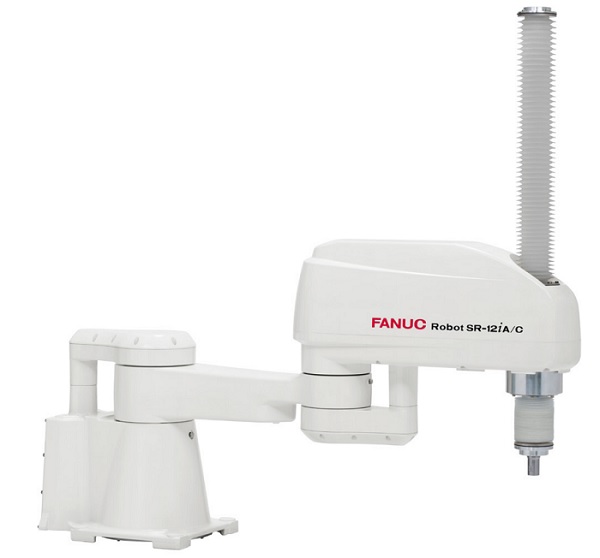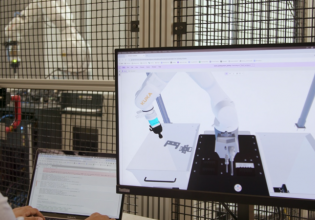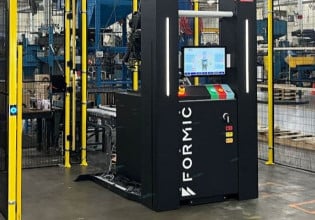It’s SCARA, but True! FANUC Releases SR-12iA/C Food-Grade Robot
FANUC has launched the SR-12iA/C food-grade SCARA robot, the largest bot in its category, for hygienic handling and cleanroom applications requiring extended reach and larger payloads.
High-speed assembly and pick-and-place tasks can now be handled in more hygienic environments, thanks to the launch of FANUC's new SCARA robot, the SR-12iA/C, specifically designed for food & bev, as well as cleanroom applications.
The New SR-12iA/C Food Grade SCARA Robot.
The food-grade version of the SR-12iA/C SCARA robot was specifically designed to meet the needs of food companies. It complies with the food safety regulations required for the production and distribution of food and cleanroom products.

The SR-12iA/C’s compact size, impressive payload, and reach make the robot ideal for many industrial food-grade or clean room applications.
The SR-12iA/C is FANUC's largest SCARA robot to date, with a significant 12 kg (approximately 26 lb) payload at the wrist, double the capacity of their previous SCARA food-grade robot. The robot also has an impressive 900 mm (35 in) reach, has a z-axis stroke of 300-450 mm with a push force of 250 N (56 lb), and can move up to 2800 mm/s on a single axis, making it well-suited for material handling, robotic assembly, quality inspection, or packaging operations.
Other features contribute to its utility in the food industry. The corrosion-resistant robot is coated with white epoxy paint and is easy to clean. A set of bellows covers the Z-axis spindle for cleanliness and safety purposes. The robot also uses NSF H1 food-grade grease (ISO Class 2 - ISO Class 5) on all axes. The robot carries an IP65 rating on the body, wrist, and J3 arm.
There are several ways to program FANUC SCARA robots. FANUC offers the iRProgrammer, a web-based interface for robotic programmers. This interface allows FANUC robot technicians to use a company tablet, laptop, or computer for programming their SCARA robot. Alternatively, programming can also be completed using FANUC’s Roboguide or the optional Teach Pendant.
Unfamiliar with SCARA Robots?
For those unfamiliar with SCARA robots and their functions, these robots typically have four axes. A Typical SCARA robot consists of two joints (J1 and J2) that can move within a single plane (x and y). With J1 and J2 locked within the operation of a single plane, there is less chance of drifting compared to a six-axis robot, resulting in quicker and more accurate movements. The robot also has a joint (J3) that moves perpendicular to J1 and J2 and operates in the Z plane. The final joint (J4) simply rotates about the J3 Z plane.

SCARA robots typically rotate about J1 and J2 to arrive at the correct x and y coordinates, while the J3 and J4 are used to orient and vertically position the piece.
FANUC developed the SCARA robot design to prioritize speed and accuracy compared to typical six-axis robots, and it is also more compact. These features, along with the new robot’s extended reach, make the SR-12iA/C ideal for picking and packing operations with minimal errors. The precision of SCARA robots reduces waste and improves quality control, so they are a perfect choice for applications requiring precise material handling or even something as simple as cutting cakes for a food production line.
All images used courtesy of FANUC America






